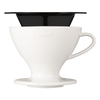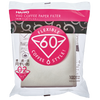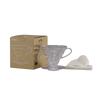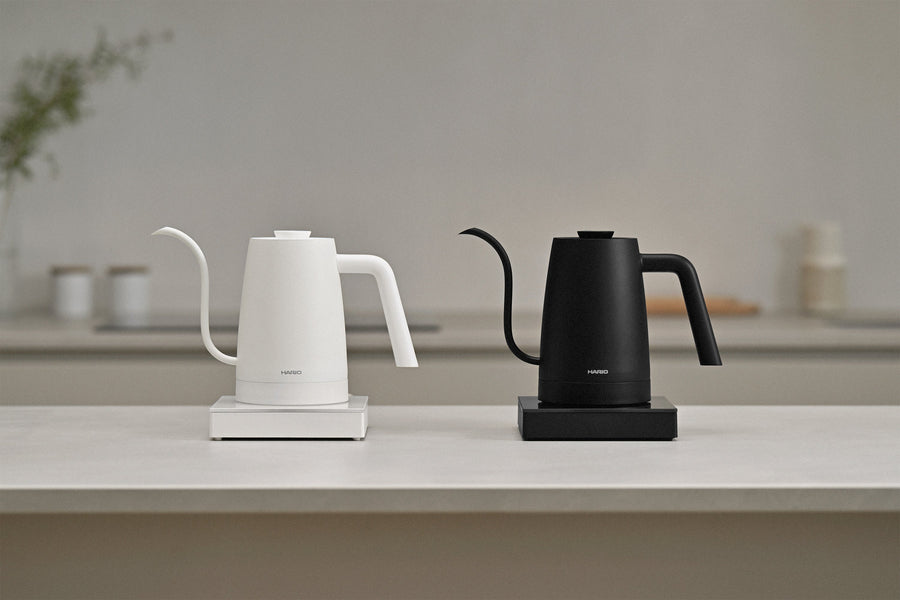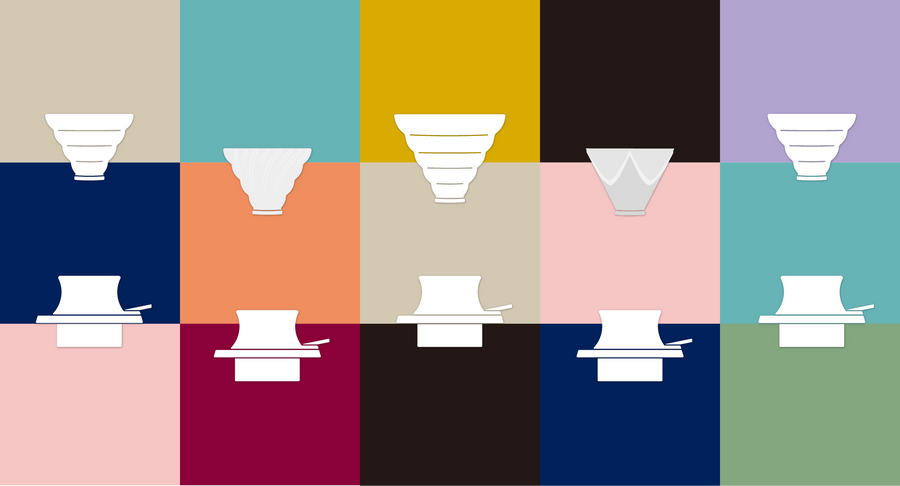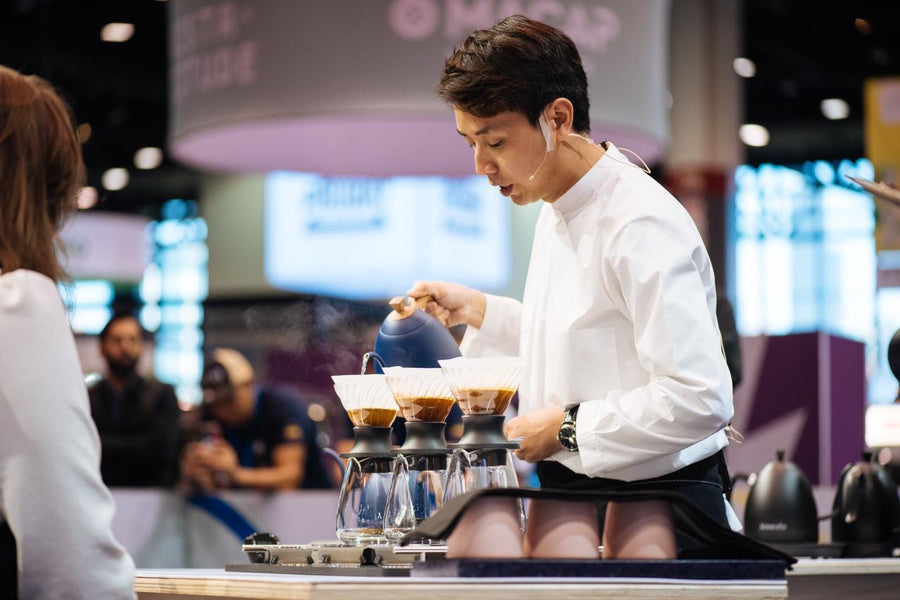Ngoc Hoang recently represented Finland in the 2021 World Brewers Cup in Italy, where she competed with HARIO’s new W60 Dripper. We were lucky enough to have the chance to talk to her about coffee, cafes, and overcoming challenges.
Born and raised in Vietnam, Ngoc moved from the South-East Asian warmth to frigid Finland some ten years ago to pursue a Master’s degree in Forestry. After working in forest research for some time, and having no particular history with − or even initial interest in − coffee, she decided to do the obvious thing, and start… a coffee shop…?
Starting out in coffee
Some five years ago, Ngoc had friends who wanted to try to run a small business, like a cafe. At the time, these kinds of start-ups were common in Finland, and the Finnish government also provided good support. So just like that, Ngoc decided to take the plunge, even though she didn’t know much about coffee. “Honestly, I didn’t drink coffee before that,” she explains. “I started to drink coffee when I opened the coffee shop. I did my first cupping ever with my coffee shop, when we were about to open.” So that must mean that her friends had experience with coffee, right? “No, they didn’t have experience with coffee, either. We were just so young, and we were like, ‘yeah, we can do something with this’.” Not being coffee experts didn’t faze them for a moment. “We decided, okay, we are from Vietnam, so we can maybe do something with coffee. Even though there is zero Vietnamese coffee in Finland.”
For those of you wondering, Vietnamese coffee tends to be roasted very dark, and then served with condensed milk and ice. Quite different from what we are used to here in Europe. “Five years ago, it was impossible to find Vietnamese coffee in Finland, so we just used dark roasted coffee, made with a little metal filter, like those used in Vietnam,” Ngoc remembers. However, one issue with this style of coffee became clear fairly quickly. “The problem with the Vietnamese-style coffee is that it takes a long time to make. Making one cup of coffee takes like five minutes,” Ngoc explains. Luckily, they got a lot of help and advice about coffee from a small, local roastery, who suggested making hand brew coffee, which is much faster and easy to learn. “We knew nothing about coffee, so whatever they told us, we were like, ‘yeah, we can try and just test it out’. I think it’s also kind of fun when you start a career without knowing everything, because you just try everything.” So, as if starting a business from scratch wasn’t challenging enough on its own, the menu was expanded to also include filter coffee.
This of course meant an intense coffee crash-course for Ngoc, quickly introducing her to new ways to enjoy the drink. “I was really surprised. It [the Vietnamese style] is a completely different style of coffee compared to what is served here. So, I tried it, and I thought, ‘oh, coffee actually has some different tastes from what I experienced in the past!’” Ngoc wasn’t the only one to start learning about specialty coffee in Finland at the time. “Five years ago, the specialty coffee community in Finland was still quite small. The majority of people were still drinking [regular] filter coffee, like the common kind that you can buy in the supermarket.” Ngoc and the team explained Vietnamese coffee to local customers, making the cafe itself a great point for intercultural exchange. Then there were also the coffee enthusiasts, who would of course ask a lot of detailed questions about specialty coffee in general, which in turn was a great way for Ngoc to learn more as well. “That’s how we were actually learning − by brewing, by trying to know more about the coffee that we are serving every time. It was a really cool learning experience for us, and I think that’s also how we learned a bit faster, because we had to,” she laughs.

Ngoc with the ceramic V60.
(Photo courtesy of Ngoc Hoang)
Her first interaction with a V60 dripper was also, unsurprisingly, through the cafe. She remembers the first time using one herself initially seeming difficult, but actually being fun, as it was the first time making a coffee with the whole setup of scales and servers. Again, the roastery helped them out, teaching them about hand brewing, and differences in tasting profiles. “They were really patient with us not knowing anything about coffee.”
Ngoc’s favourite dripper is actually the plastic V60, even though she was a bit sceptical at first, having got used to the ceramic V60. “It’s a very simple product, but you can bring it with you, it’s light and you’re not afraid that it's going to break.” She specifically likes the black one because it’s easy to keep clean. Moreover, the plastic V60 has great heat retention, making it ideal for brewing. “The plastic V60 keeps the brewing temperature more stable, because it retains heat, so the plastic doesn’t reduce the temperature that much, and it’s easy to heat up as well,” she explains.
As someone who learnt a lot about coffee in a relatively short amount of time, what is Ngoc’s advice to people who are interested in specialty coffee, but don’t know where to start? “For people who start to make coffee themselves, I think it initially comes from curiosity, and then they want to make better coffee, right? So, just let people try.” For example, her husband makes filter coffee at home from time to time as well. “And then, of course, the coffee tastes different. And then people start to ask you, ‘well, it’s not what I expected, how should I make it better?’ Or, ‘how should I change it?’ because they want it to be a bit… maybe stronger or sweeter. And that’s just the starting point, because I think everything comes from the person themselves. You want to have better coffee, or you want to make the coffee the way you want.” According to Ngoc, that’s where baristas and other coffee professionals come in, to plant the seed of curiosity in people. “I think as coffee people, baristas, or coffee professionals, what we can do best is to create a curiosity in people, that they want to make better coffee, that they want to try different recipes and different processes.”

Ngoc in front of her cafe.
(Photo courtesy of Ngoc Hoang)
A day in the life
Ngoc ran the coffee shop for a few years, working as a barista during the day, and doing her side job as a data scientist in the evening. But as you can imagine, this left her focus divided. So, two years ago, Ngoc decided to sell the cafe and pursue what she wanted to do most. While her current daily work is unrelated to the coffee industry (she’s a data scientist, working mostly with data modelling and data analytics in a Finnish company), she doubled down on her activity in the Finnish coffee community. She now focuses on competing in coffee competitions, and also joined forces with the Specialty Coffee Association Finland as their education coordinator, helping organise competitions (just the ones that she doesn’t compete in herself, of course) and spreading the word about coffee, as much as that is possible during a global pandemic. One of the places where she promotes coffee is actually at her job. “I sometimes introduce my colleagues to some coffee things. My name is super hard to remember for Finnish people, so most of the people in the company remember me because I’m the coffee girl,” she laughs. “They [my colleagues] ask about the competitions, and different types of coffees, so it’s kind of cool that in some way you can share your ‘full-time hobbies’ with your work.”
Now, even though there are only so many hours in the day, Ngoc has yet another passion: ceramics. She and her partner have just moved to a new place, where she has some space for a small atelier to make cups and plates. “Nowadays we are always on computers, so with coffee and ceramics [you actually] don’t touch your phone or computer. So it’s a good way to work with your hands, and with your concentration, and stay disconnected a bit.”

Some of Ngoc's ceramic creations.
(Photo courtesy of Ngoc Hoang)
Joining competitions and using the W60
Ngoc’s first competition was a very casual one that just happened to be going on in the cafe where she happened to be at the time. The local coffee community was very inviting and asked her to join. “They keep saying like, ‘competing is fun, just compete, it’s your chance to drink better coffee’. So, I said okay, and now I compete,” she explains. After selling her cafe and starting to focus more on coffee competitions, Ngoc got second place in the 2020 Finnish Brewers Cup, right before the start of the global lockdowns. When the 2021 World Brewers Cup finally came around after a year of lockdown, the 2020 winner was supposed to participate. However, they dropped out due to personal reasons, opening up a spot for Ngoc a mere 1.5 months before the competition. Although she had little time to prepare, and despite her go-to dripper being the plastic V60, she decided to once again challenge herself with a new brewing method. She got several new HARIO products, like the W60 and V60 Drip-Assist, and started experimenting. “And actually, I really liked the W60 in the way that it’s really versatile. Because you have two layers, and you can choose [to use] one, or you can choose both. And the good thing about this is I’ve always liked flat-bottom drippers, which give the coffee a little bit more body. Also, the mesh dripper in the W60 is flat and plastic, so you actually don’t really reduce the temperature that much.”
The coffee that Ngoc used in the open service was a Geisha from Finca Deborah (Jamison Savage coffee), which they fermented with koji spores. “I tried that geisha with the V60 and W60, and the result was that the W60 gave the coffee a lot more body.” That still meant a lot of learning about the new dripper. “It’s a completely new dripper for me, so it’s hard to immediately formulate the recipe. But the body it gives to the coffee was so good, so we were like, okay, we will go with this. It’s going to be harder, but it’s all about learning and having fun in the competition.”
The coffee that Ngoc used in the open service was a Geisha from Finca Deborah (Jamison Savage coffee), which they fermented with koji spores. “I tried that geisha with the V60 and W60, and the result was that the W60 gave the coffee a lot more body.” That still meant a lot of learning about the new dripper. “It’s a completely new dripper for me, so it’s hard to immediately formulate the recipe. But the body it gives to the coffee was so good, so we were like, okay, we will go with this. It’s going to be harder, but it’s all about learning and having fun in the competition.”
Famously, one of the most expensive coffees in the world is Kopi Luwak, which is created from coffee beans that have been eaten, semi-digested and then pooped out by cats. This process inspired bio-scientist Koichi Higuchi to try to simply ferment the coffee beans with koji spores, which is a mould that has been used in traditional Japanese food like miso and soy sauce for centuries. The result is a sweeter and softer coffee, and the great news is that this new fermentation process can be used to bring out remarkable tastes even in coffee beans that are otherwise average.
Before she stood in the competition spotlight herself, Ngoc already had some experience volunteering as the assistant stage manager at the Coffee in Good Spirits World Championship in Berlin, in 2019. Knowing the general flow of a world championship helped calm her nerves a bit, although it’s still quite different when you’re the one competing. “Overall, it was a really fun experience. I think people are really nice and friendly. And the volunteers are amazing, they help us a lot.” Having said that, there are still parts that aren’t really clear for outsiders looking in. “Especially the compulsory round, the one that happened backstage. From my own experience, I don’t know what’s happening in this compulsory round, what we’re going to do. It was kind of vague for me, even though I read the rules. You have videos of the open service, but nothing about the compulsory.” So, as you may expect at this point, Ngoc set herself a new challenge and is now working with her husband on a YouTube channel to more openly share information with other coffee enthusiasts. “Our plan is to try to make these coffee competitions more friendly, and not so scary. Because the more people compete, the stronger and bigger the coffee community will be. And that means bringing good coffee to more people.”

Ngoc and her coach at the World Brewers Cup 2021.
(Photo courtesy of Ngoc Hoang)
The meaning of coffee
The best coffee that Ngoc had in recent memory was brewed with a humble Java bean, fermented by her coffee coach with the same koji process used for the Geisha beans she used in the competition. “It surprised me because it was so sweet, the body was so good.” Since it was very experimental, the amount was limited and she ended up not using it during the competition, but she is excited about the future prospects of this kind of coffee. “One of the reasons that I like it [this coffee] is because the production process is easy, with the potential for replication, and wide application with more coffees and more coffee farms. This would benefit a lot of farmers in the future, and that’s how this coffee world is getting better.”
Talking to Ngoc, we were really taken by her entrepreneurial spirit of taking on seemingly any challenge. But you cannot challenge yourself if you don’t get meaning or enjoyment out of your pursuit. So, what is it that keeps Ngoc coming back to coffee? “It [coffee] is kind of like an experience. When we start to talk about coffee… It’s just a topic that connects you with other people. And I like that. It’s always a part of my life, I would say, even though I told you I didn’t drink coffee in Vietnam. But we always went to the coffee house, and I would just have some other drinks,” she laughs. “But I always liked to go to have a coffee. It’s just the way that we say it in Vietnam. ‘To have a coffee’. It means like, to see people. To stay connected.”
Luckily for people interested in starting their coffee journey in Finland, the Finnish coffee community is very open and welcoming. “There are only a few foreigners in the [Finnish] coffee community, but they try to make everything in English, for us to join.” Ngoc’s advice for people looking to get into coffee is simply to be open minded. Filter coffee has been enjoyed in the old style in Finland for a very long time, she says. “So just be open to coffee, that coffee can taste different. And that that doesn’t necessarily mean that it’s bad.” Moreover, be open to asking questions to your barista. “The problem for Finnish people is that they’re so shy, so they don’t start the conversation, even though sometimes they’re kind of curious about things. So asking questions and having a conversation is just the best way to discover [new things about coffee].” And in recent years, Ngoc is happy to see that not only the Finnish, but also the Vietnamese coffee community has started to grow. “It’s great to see the Vietnamese people start to compete, start to know more about coffee. It makes us, as a producing country, more aware about the coffee world.”
While specialty coffee may seem intimidating when you’re just starting out, Ngoc’s story just goes to show that you can make great coffee as long as you’re curious and willing to try. And especially in Ngoc’s case, it seems that this isn’t limited to coffee, either. From moving from Vietnam to Finland, from studying forestry to owning a cafe, from making ceramics to competing at the World Brewers Cup, seeing a challenge and then overcoming it seems to be what she’s all about. But, like with anything, that all starts by just giving it a go. “I don’t like the feeling that I’m regretting that I didn’t do something. It’s better to say that I tried and I got something out of it. That’s a good experience.”

Ngoc with her 2019 Finnish Cup Tasters certificate.
(Photo courtesy of Ngoc Hoang)
Where to find Ngoc
Ngoc can be found on Instagram and Facebook, and in the future maybe on YouTube as well (she and her husband are currently working on creating coffee-related videos). The cafe (Papu Cafe) that she started is still being operated and can be visited for a cup of Vietnamese or Western-style coffee. And if you happen to spot Ngoc in her hometown of Helsinki, Finland, make sure to say hi. “My eyesight is like two meters. So if you’re further away than that, I don’t see anything. Maybe that’s why I was really calm on the stage, because I really don’t see anything except the judges” she laughs.
Ngoc was kind enough to share the W60 Dripper recipe she used at the 2021 World Brewers Cup, so you can try it out for yourself at home! You can find the recipe here.
Header photo credit: Specialty Pal for the Specialty Coffee Association

